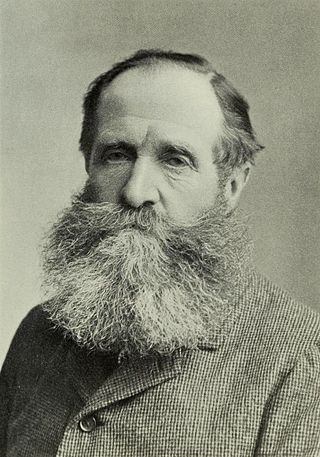
John Poyntz Spencer, 5th Earl Spencer, KG, KP, PC, known as Viscount Althorp from 1845 to 1857, was a British Liberal Party politician under, and close friend of, prime minister William Ewart Gladstone. He was twice Lord Lieutenant of Ireland.

Spencer Compton Cavendish, 8th Duke of Devonshire,, styled Lord Cavendish of Keighley between 1834 and 1858 and Marquess of Hartington between 1858 and 1891, was a British statesman. He has the distinction of having held leading positions in three political parties: leading the Liberal Party, the Liberal Unionist Party and the Conservative Party in either the House of Commons or the House of Lords. After 1886 he increasingly voted with the Conservatives. He declined to become prime minister on three occasions, because the circumstances were never right. Historian and politician Roy Jenkins said he was "too easy-going and too little of a party man." He held some passions, but he rarely displayed them regarding the most controversial issues of the day.

William Waldegrave Palmer, 2nd Earl of Selborne, styled Viscount Wolmer between 1882 and 1895, was a British politician and colonial administrator, who served as High Commissioner for Southern Africa.
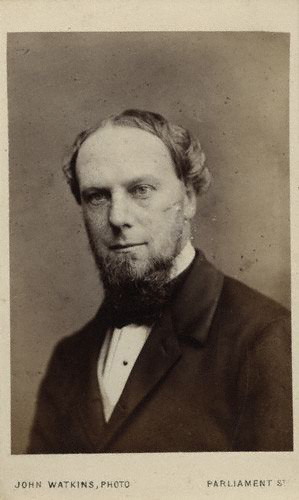
John Wodehouse, 1st Earl of Kimberley, known as the Lord Wodehouse from 1846 to 1866, was a British Liberal politician. He held office in every Liberal administration from 1852 to 1895, notably as Secretary of State for the Colonies and as Foreign Secretary.

Lord Palmerston, of the Whigs, first formed a government by popular demand in 1855, after the resignation of the Aberdeen Coalition. Initially, the government was a continuation of the previous coalition administration but lost three Peelites within a few weeks. However, other Peelites like The Duke of Argyll and The Viscount Canning remained in office. Palmerston was heavily criticised by Parliament in 1857 over the conduct of the Second Opium War and called a dissolution, but the nation voiced its support in the resulting general election and he returned with a Whig majority.
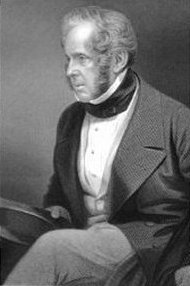
The Liberal government of the United Kingdom of Great Britain and Ireland that began in 1859 and ended in 1866 consisted of two ministries: the second Palmerston ministry and the second Russell ministry.

The National Government of 1937–1939 was formed by Neville Chamberlain on his appointment as Prime Minister of the United Kingdom by King George VI. He succeeded Stanley Baldwin, who announced his resignation following the coronation of the King and Queen in May 1937.
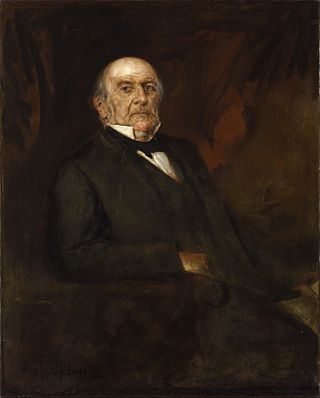
The third Gladstone ministry was one of the shortest-lived ministries in British history. It was led by William Ewart Gladstone of the Liberal Party upon his reappointment as Prime Minister of the United Kingdom by Queen Victoria. It lasted five months until July 1886.

The Conservative government under Benjamin Disraeli had been defeated at the 1868 general election, so in December 1868 the victorious William Gladstone formed his first government. He introduced reforms in the British Army, the legal system and the Civil Service, and disestablished the Church of Ireland. In foreign affairs he pursued a peaceful policy. His ministry was defeated in the 1874 election, whereupon Disraeli formed a ministry and Gladstone retired as Leader of the Liberal Party.
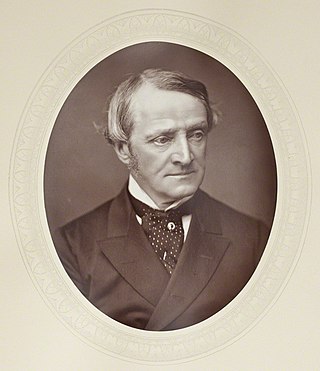
Chichester Samuel Parkinson-Fortescue, 2nd Baron Clermont and 1st Baron Carlingford, known as Chichester Fortescue until 1863 and as Chichester Parkinson-Fortescue between 1863 and 1874 and Lord Carlingford after 1874, was a British Liberal politician of the 19th century.

Stanley Baldwin of the Conservative Party formed the second Baldwin ministry upon his reappointment as Prime Minister of the United Kingdom by King George V after the 1924 general election. His second ministry ended following the so-called "Flapper Election" of May 1929.

The second Peel ministry was formed by Sir Robert Peel in the United Kingdom of Great Britain and Ireland in 1841.

John George Dodson, 1st Baron Monk Bretton, PC, known before 1884 as John George Dodson, was a British Liberal politician. He was Chairman of Ways and Means between 1865 and 1872 and later held office under William Ewart Gladstone as Financial Secretary to the Treasury, President of the Local Government Board and Chancellor of the Duchy of Lancaster. In 1884 he was elevated to the peerage as Baron Monk Bretton.

The Conservative government of the United Kingdom that began in 1957 and ended in 1964 consisted of three ministries: the first Macmillan ministry, second Macmillan ministry, and then the Douglas-Home ministry. They were respectively led by Harold Macmillan and Sir Alec Douglas-Home, who were appointed by Queen Elizabeth II.

The Liberal government of the United Kingdom of Great Britain and Ireland that began in 1905 and ended in 1915 consisted of two ministries: the first led by Henry Campbell-Bannerman and the final three by H. H. Asquith.

The Canningites, led by George Canning and then the Viscount Goderich as First Lord of the Treasury, governed the United Kingdom of Great Britain and Ireland from 1827 until 1828.

Margaret Thatcher was Prime Minister of the United Kingdom from 4 May 1979 to 28 November 1990, during which time she led a Conservative majority government. She was the first woman to hold that office. During her premiership, Thatcher moved to liberalise the British economy through deregulation, privatisation, and the promotion of entrepreneurialism.
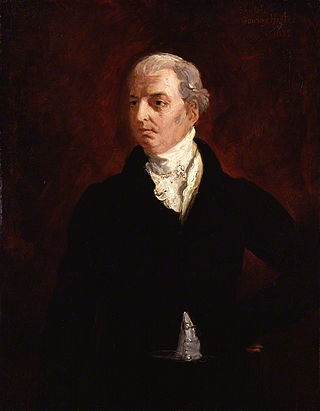
This is a list of members of the government of the United Kingdom in office under the leadership of Lord Liverpool from 1812 to 1827. He was appointed Prime Minister of the United Kingdom by the Prince Regent after the assassination of Spencer Perceval.




















